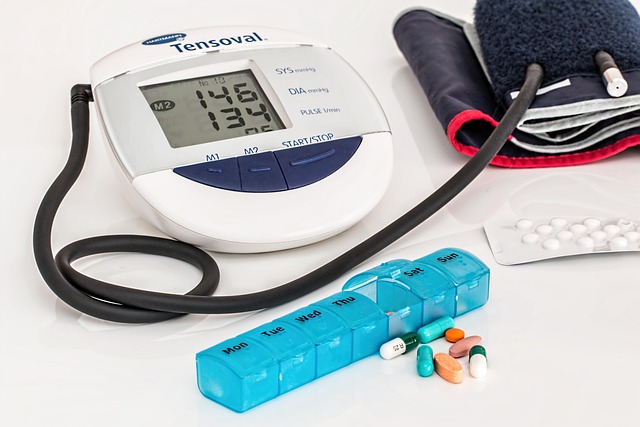Early Warning Signs of Heart Failure and Valve Disease
Heart failure and heart valve disease can show early warning signs. Learn about heart failure symptoms and how to spot signs of heart valve disease. Understand when to seek medical advice for a failing heart valve and take steps toward better heart health.

Heart failure and valve disease represent significant cardiovascular challenges that can severely impact quality of life when left undetected. While these conditions sound alarming, early recognition of symptoms and prompt medical intervention can significantly improve outcomes. Heart failure occurs when the heart muscle cannot pump blood efficiently, while valve disease involves damage or defects in one or more of the heart’s four valves. Both conditions share some common warning signs but also present with distinct symptoms that warrant attention.
What Are the Early Signs of Heart Valve Disease?
Heart valve disease can manifest through several characteristic symptoms that often develop gradually. Fatigue during routine activities that previously caused no issues is often one of the earliest indicators. Many patients report feeling unusually tired after climbing stairs or walking short distances. Shortness of breath, particularly when lying flat (orthopnea), represents another critical warning sign. This occurs because blood can back up in the lungs when valves aren’t functioning properly.
Heart murmurs—unusual sounds detected during a stethoscope examination—often indicate valve problems even before other symptoms appear. These sounds result from turbulent blood flow through damaged or malfunctioning valves. Swelling in the ankles, feet, and legs (peripheral edema) frequently accompanies valve disease as the heart struggles to pump efficiently, causing fluid retention. Some patients may also experience heart palpitations or irregular heartbeats as the heart attempts to compensate for valve dysfunction.
How to Recognize a Failing Heart Valve
A failing heart valve often produces specific symptoms beyond those shared with general heart failure. Chest pain or discomfort, particularly during physical activity, can signal aortic valve stenosis or other valve problems. This pain may radiate to the jaw, neck, or arms, similar to angina. Dizziness, lightheadedness, or fainting episodes (syncope) occur when the brain receives insufficient oxygen due to compromised cardiac output from valve dysfunction.
Some patients develop a bluish discoloration of the skin (cyanosis), particularly noticeable in the lips and fingertips, indicating poor oxygenation. Unexpected weight gain of several pounds over a few days often results from fluid retention caused by the heart’s decreased pumping ability. Decreased appetite and abdominal swelling may develop as fluid builds up in the digestive system. Many patients with valve disease also report feeling their heart racing or skipping beats, which warrants immediate medical attention.
Heart Failure Prevention Strategies
Preventing heart failure and valve disease begins with managing controllable risk factors. Maintaining healthy blood pressure levels is crucial, as hypertension forces the heart to work harder and can damage valves over time. Regular monitoring and medication adherence when prescribed can significantly reduce this risk. Similarly, controlling cholesterol levels through diet, exercise, and medication when necessary helps prevent atherosclerosis that can contribute to valve damage and heart failure.
Adopting a heart-healthy diet rich in fruits, vegetables, whole grains, and lean proteins while limiting sodium, saturated fats, and processed foods supports cardiovascular health. Regular physical activity—at least 150 minutes of moderate exercise weekly—strengthens the heart muscle and improves circulation. Maintaining a healthy weight reduces strain on the heart, while avoiding tobacco products and limiting alcohol consumption eliminates major risk factors for heart disease.
Managing stress through relaxation techniques, adequate sleep, and social connections also plays an important role in heart health. For those with existing conditions like diabetes or sleep apnea, proper management is essential, as these conditions can significantly increase heart failure risk when uncontrolled.
When to Consult a Doctor for Heart Issues
Certain symptoms demand immediate medical attention. Shortness of breath that worsens when lying down or during minimal exertion should never be ignored. Persistent swelling in the lower extremities, especially when accompanied by weight gain, warrants prompt evaluation. Chest discomfort or pressure that doesn’t resolve with rest requires emergency assessment to rule out acute cardiac events.
Regular checkups become increasingly important with age or if you have risk factors like family history of heart disease, diabetes, or high blood pressure. During these visits, doctors can detect murmurs or other abnormalities before symptoms develop. Unexplained fatigue, decreased exercise tolerance, or persistent coughing—particularly when producing pink, frothy mucus—should trigger a medical consultation.
Anyone experiencing palpitations, irregular heartbeats, or episodes of dizziness/fainting should seek immediate medical evaluation. These symptoms could indicate arrhythmias associated with valve disease or heart failure. Remember that early intervention often leads to better outcomes, so don’t hesitate to consult healthcare providers about cardiovascular concerns.
Treatment Options and Medical Care
Modern medicine offers numerous approaches to manage heart failure and valve disease. Medications form the cornerstone of treatment for many patients. Diuretics help reduce fluid retention, while ACE inhibitors and ARBs lower blood pressure and reduce strain on the heart. Beta-blockers slow heart rate and reduce the heart’s workload, while aldosterone antagonists help manage fluid balance. For some valve conditions, blood thinners may prevent clots from forming on damaged valves.
For valve disease specifically, interventional procedures have revolutionized treatment. Balloon valvuloplasty uses a catheter with an inflatable balloon to open narrowed valves, while transcatheter valve replacement (TAVR/TAVI) allows valve replacement without open-heart surgery. Traditional surgical approaches remain important options, including valve repair (preserving the patient’s own valve) or valve replacement with mechanical or biological valves.
Advanced heart failure may require more intensive interventions. Cardiac resynchronization therapy (CRT) uses specialized pacemakers to coordinate heart contractions, while implantable cardioverter-defibrillators (ICDs) prevent sudden cardiac death. For end-stage heart failure, ventricular assist devices (VADs) or heart transplantation may be considered.
Regardless of treatment approach, cardiac rehabilitation programs provide supervised exercise, education, and support to improve outcomes. These comprehensive programs help patients understand their condition, optimize medication use, and make sustainable lifestyle changes to support heart health.
Heart failure and valve disease represent serious cardiovascular conditions, but awareness of early warning signs enables timely intervention. By recognizing symptoms, implementing prevention strategies, seeking appropriate medical care, and adhering to treatment plans, patients can significantly improve their prognosis and quality of life. Regular communication with healthcare providers remains essential throughout the management of these conditions.
This article is for informational purposes only and should not be considered medical advice. Please consult a qualified healthcare professional for personalized guidance and treatment.




